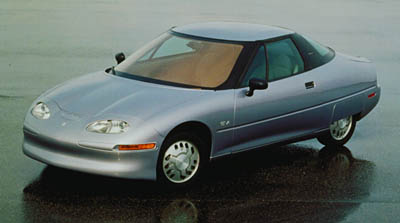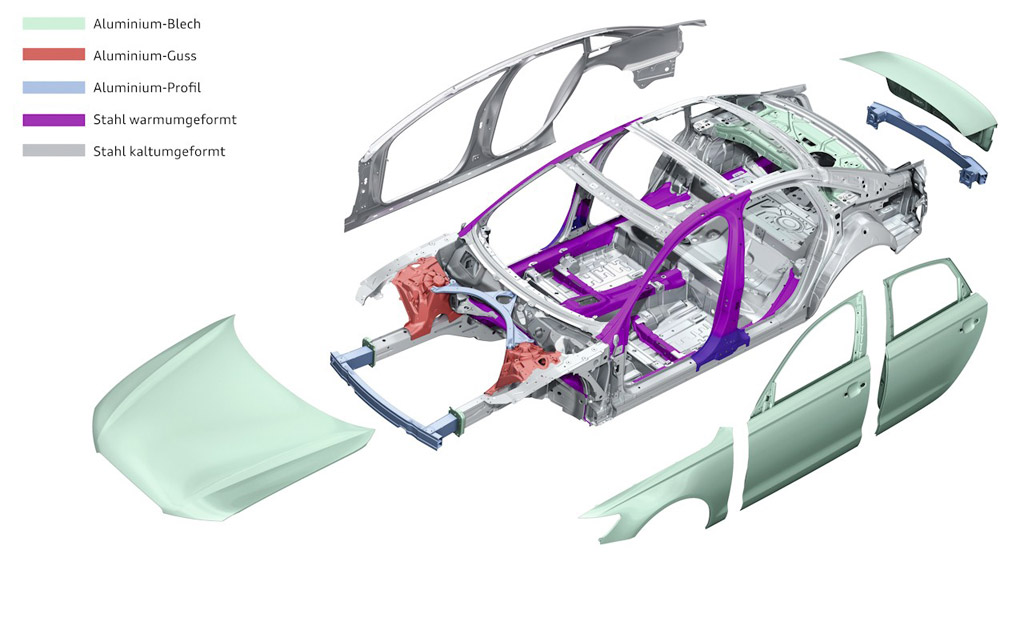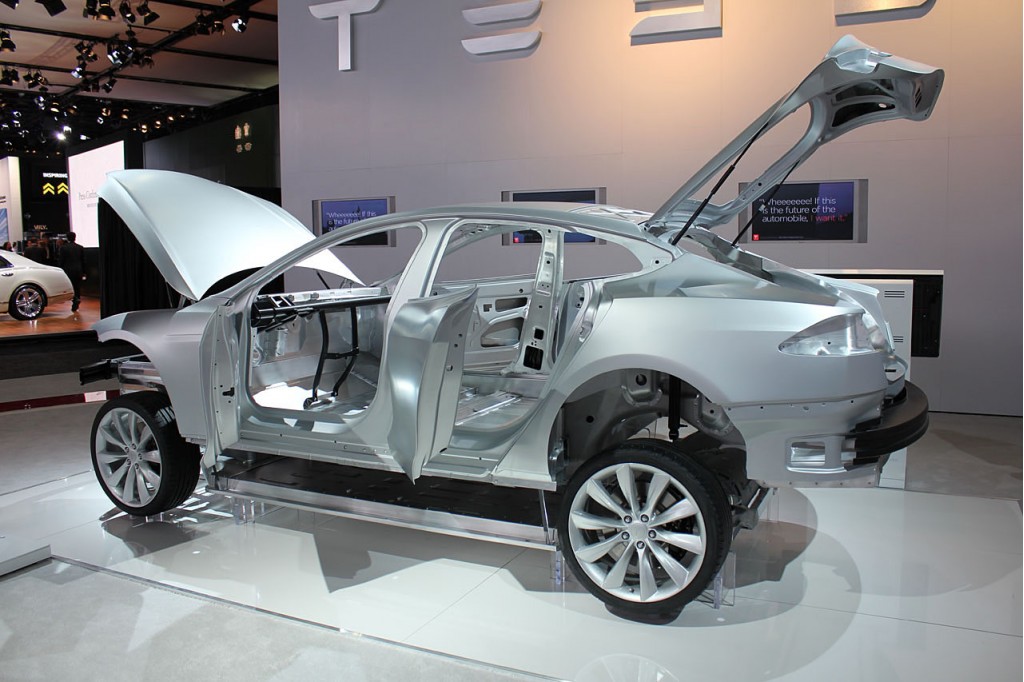No, we won't all be driving golf carts.
In fact, as cars change over the next 12 years to meet much tougher fuel-economy rules, automakers will likely do their best to keep the changes invisible.
Your next vehicles will deliver better gas mileage than ever before, no matter how large or small they are.
By 2025, the industry has agreed to meet an overall corporate average fuel economy (CAFE) level of 54.5 mpg.
That translates to about a 42-mpg combined EPA rating on the window sticker, due to differences in how fuel efficiency is calculated.
That's lower than three different Toyota Prius hybrid models achieve today, but the average includes everything from minicars to full-size pickup trucks.
So what are the technologies that will let automakers comply with the gas-mileage rules--and how will they change your next car?
We've broken this rundown into three parts:
- Part I: New Gas Mileage Rules Will Reshape What Americans Driver: Aerodynamics And Weight
- Part II: New Gas Mileage Rules Will Reshape What Americans Drive: Engines And Transmissions
- Part III: New Gas Mileage Rules Will Reshape What Americans Drive: Hybrids, Electrics, Costs
Today, we'll look at the increasingly slippery shapes cars will take on--many of which you probably won't notice--and the diets they'll be put on to lose excess weight.
In both cases, the changes may not seem as radical as you imagine.
AERODYNAMICSOne of the easiest ways to save fuel is to make a car smoother and slipperier above 40 mph, when the energy required to overcome wind resistance starts to rise.
Every new vehicle, from sleek supercars to bluff, blocky-looking pickup trucks, now spends hundreds or thousands of hours in the wind tunnel.
Body designers and aerodynamicists refine every element, from wing mirrors to small "spats" at the corners of the wheel arches, to reduce the airflow turbulence that causes drag.

Wind tunnel testing the MINI Cooper John Cooper Works GP
Airflow is key over 40 mph
By guiding the air smoothly over and around the car, reducing the swirls and eddies where air gets trapped, less energy is required to push the car through the air.
A byproduct is that the car can also become quieter, with less wind noise apparent inside.
One way you can confirm just how aerodynamic a new car is: Take it on the freeway and open one window--say the driver's--and then another one on the other side, perhaps the right rear.
In many cars, the imbalance in airflow on the two sides produces a fast, unpleasant drumming or buffeting sound.
That old tip about opening your windows to save fuel by keeping the ventilation off?
Definitely no longer accurate; efficient aerodynamics save more fuel at speed than the newest electric air-condioning compressors use.

2011 Chevrolet Cruze Eco
Grille shutters, undertrays
Two simple, invisible ways that automakers can smooth out the airflow over new cars are adding active grille shutters and smooth undertrays.
First launched on the 2011 Chevrolet Cruze Eco, active grille shutters sit behind the grille and close off the airflow through the radiator when it's not needed for engine cooling.
That cuts turbulence (that air has to escape from the engine compartment somewhere) by simply routing the airflow around the car's nose and over the rest of the body.
GM now uses those active grille shutters on several different Buick and Chevrolet models, and Chrysler has added them to its latest 2013 Ram1500 pickup truck for the same reason.
As for smooth undertrays, they're simple, durable composite panels that cover the various components hanging underneath the car's floorpan.

2012 Buick Lacrosse with eAssist, underbody aero panel
Usually there's a cutout for the very hot exhaust system, but suspension components, chassis pressings, and all the other stuff you never see is hidden behind a smooth shield past which the air flows more smoothly.
Again: less turbulence, less fuel burned to overcome the air resistance.
Self-lowering vehicles
In future, vehicles will start to lower themselves closer to the road surface when traveling on smooth roads at high speed.
The less turbulence created between the road and the bottom of the car, the more economically it can travel.
And most drivers and passengers will never sense that the car is an inch or two closer to the pavement than it was when they stepped into it.
Already seen on a handful of supercars and luxury sedans, this may next appear in pickup trucks and utility vehicles.
Their ground clearance of 7 to 9 inches creates far more turbulence between the vehicle and the road than more low-slung cars generate.
Electric cars at the forefront
Some of the most aggressive aerodynamic efforts have gone into plug-in electric cars, to cut wind resistance and add every last mile possible to the limited range of very expensive battery packs.
The 2013 Fiat 500e low-volume compliance car, for instance, has reshaped front and rear fascias, small spats on the wheel wells, reshaped side mirror covers, and underbody shields to smooth airflow.
And some of those modifications are going to make their way back into the gasoline Fiat 500 range, improving its fuel efficiency as well.
Similarly, Chevrolet found it gained more range by shaving points off the aerodynamic drag of its Volt range-extended electric car than it did reducing the car's weight.
In part, that's because the energy expended to accelerate a greater weight can partly be recaptured from momentum through regenerative braking, while energy used to overcome drag is lost forever.

2014 Mercedes-Benz CLA 250
Not 'science projects'
Perhaps most importantly, these far more aerodynamic cars won't look like science projects.
More illustratively, they won't all look like the Toyota Prius, with its rounded front, tiny grille opening, slab sides, and high, vertical tail. Or the tiny first-generation Honda Insight two-seater, or the GM EV1 with its teardrop shape.
Most buyers want better fuel economy, but they also want their cars to have familiar shapes--a utility vehicle should look like a tall wagon, a sedan should have a recognizable trunk, and so forth.
The best proof that this is possible is the Mercedes-Benz CLA compact sedan, which its maker says has the lowest drag coefficient of any current production car.
It has no fender skirts, no visible teardrop shape, and no pinched, narrowed tail.
It has a grille, four doors, and a recognizable sedan profile--if perhaps sleeker than the boxy small Mercedes-Benz compacts of years past.

1999 GM (Specialty Vehicles) EV1
In other words, it looks nothing like the futuristic GM EV1 that had the lowest drag coefficient of any production car fully 15 years ago.
It's all in the details.
WEIGHT REDUCTIONAlong with reducing aerodynamic drag, the other "free" way to cut energy consumption is to make the whole car lighter.
It's far from free, in reality, because lighter materials like aluminum, some composites, and carbon fiber are considerably pricier than good old steel.

2012 Audi A6 aluminum and steel construction
The automotive steel industry has been far more resilient than most analysts expected.
It has created several dozen different types and strengths of steel used for critical crash-safety structures that are no heavier or bulkier than their regular-steel counterparts, but far, far stronger.
They're more expensive, true, but nowhere near the cost of aluminum. And the steel industry expects further advances to allow steel bodies as light as aluminum ones.
Aluminum for big luxury
Still, for large luxury vehicles, aluminum is slowly becoming the material of choice.

2012 Tesla Model S body-in-white
The Audi A8, Jaguar XJ, and Tesla Model S are all built of more than 90 percent aluminum, saving hundreds of pounds.
The new 2013 Range Rover switched from steel to aluminum construction, and lost fully 800 pounds model for model. Its combined EPA rating went up from 14 mpg to 16 mpg.
Those are hardly Prius numbers, granted, but a notable 14-percent improvement in a car that's more powerful, faster, safer, and offers more standard and optional equipment.
Carbon fiber coming
Even lighter and stronger than steel is carbon fiber, long used only in race cars and the most exotic, low-volume supercars.
But the 2014 BMW i3 electric car, on sale next January, will be the first mass-produced vehicle in the world to have a body structure built of carbon-fiber reinforced plastic (CFRP), sitting on an aluminum platform that contains the battery and running gear.
The body cell of the BMW i3 is so strong that no central door pillar is required to meet rollover and roof-crush safety tests.
BMW expects it to earn high safety ratings, and has set up a special production line to lay the fibers into the composite in volume--previously a task done by hand.
Under a program backed by the government, several Japanese makers are collaborating with carbon-fiber suppliers on methods of mass-producing carbon fiber for car use.
The program's goal is to launch the first volume production vehicle with carbon-fiber components in 2015.
Everything else gets lighter too
But beyond body shells--admittedly the heaviest component of a car--every other component is continuously scrutinized for ways to shave off ounces or pounds.

BMW i3 Concept
There are now engine manifolds made of plastic composites tough enough to endure the high heat of an engine for hundreds of thousands of miles. Other engines have manifolds build right into their cylinder heads.
Replacing a V-6 engine with a four means a smaller, lighter engine compartment, which requires a less beefy suspension, and so forth.
Seats are lighter, brackets switch from metal to plastic, trunklids from aluminum to composites, electric power steering weighs less than the old-fashioned hydraulic kind, and so forth.
Even window and windshield glass is getting lighter (while remaining as strong as ever), which has the added benefit of lowering a car's center of gravity slightly for better handling.
By some estimates, a car of the same power and interior space could weigh 20 to 30 percent less in 2025 than it does today.
Removing a quarter of the weight doesn't quite translate to a comparable boost in fuel efficiency--but it all counts.

2012 Fiat 500 IIHS crash testing
Safety remains
Carmakers are even starting to mention the gas-mileage advantages of lighter vehicles. The 2013 Hyundai Santa Fe is the only mid-size crossover utility vehicle under 2 tons, notes Hyundai.
That means it has a better power-to-weight ratio than the Ford Explorer; each horsepower of the Santa Fe's engine only has to move 13.5 pounds, whereas the Explorer has to move 15.6 pounds with each of its horses.
The best part is that while vehicle structures will get lighter, safety standards won't change--so lighter cars will continue to have to meet the latest safety standards.
And drivers likely won't notice the lighter cars from behind the wheel. They'll only see the difference at the gas pump.
NEXT ..
- Part II: New Gas Mileage Rules Will Reshape What Americans Drive: Engines And Transmissions
- Part III: New Gas Mileage Rules Will Reshape What Americans Drive: Hybrids, Electrics, Costs
_______________________________________________













